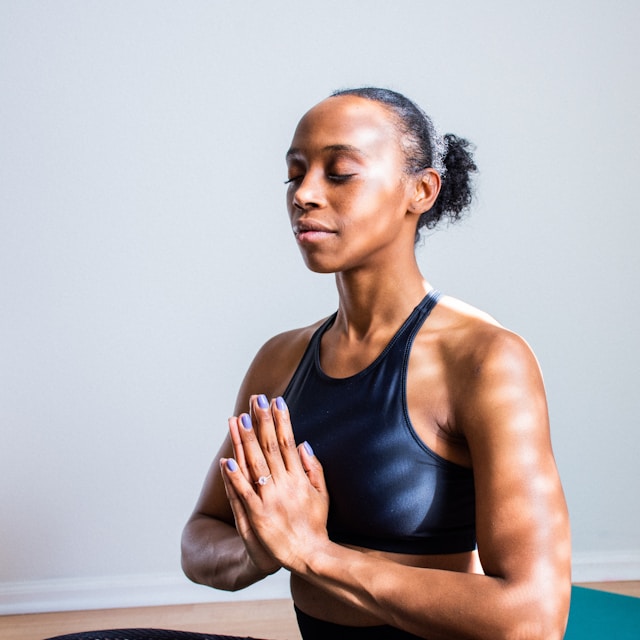Breathing is something we do unconsciously every day, yet few people realize its transformative power. In yogic traditions, breath control (pranayama) is considered the key to mental clarity, physical well-being, and spiritual growth.
Among the various pranayama techniques, four fundamental practices form the foundation of breath regulation:
- Puraka (Inhalation) – The art of deep, mindful breathing.
- Antar Kumbhaka (Internal Retention) – Holding the breath after inhalation.
- Rechaka (Exhalation) – Slow and controlled exhalation.
- Bahya Kumbhaka (External Retention) – Holding the breath after exhalation.
By mastering these four stages, you can improve lung capacity, reduce stress, and cultivate a calm, focused mind.

1. Puraka (Inhalation) – The Foundation of Breathwork
Puraka refers to the inhalation phase of breathing. It is the first step in pranayama and plays a crucial role in oxygenating the body and preparing the mind for deeper states of awareness.
How to Practice Puraka:
✔️ Sit comfortably with a straight spine.
✔️ Inhale slowly and deeply through the nose, expanding the abdomen, ribs, and chest.
✔️ Focus on making the inhalation smooth and steady.
✔️ Ensure the breath is silent and effortless, without any force.
Benefits of Puraka:
- Increases oxygen flow to the brain and muscles.
- Enhances energy levels and mental clarity.
- Prepares the body for pranayama and meditation.
2. Antar Kumbhaka (Internal Breath Retention) – Enhancing Oxygen Absorption
Antar Kumbhaka is the intentional pause after inhalation. Holding the breath inside allows for greater oxygen absorption and helps train the mind to remain still and focused.
How to Practice Antar Kumbhaka:
✔️ After a deep inhalation, hold the breath comfortably without straining.
✔️ Keep the chest expanded and shoulders relaxed.
✔️ Focus on stillness and inner awareness.
✔️ When ready, gently transition into exhalation (Rechaka).
Benefits of Antar Kumbhaka:
- Enhances oxygen absorption, improving lung efficiency.
- Strengthens the diaphragm and respiratory muscles.
- Improves mental clarity and concentration.
💡 Note: Beginners should start with short breath retentions and gradually increase duration over time.
3. Rechaka (Exhalation) – The Power of Letting Go
Rechaka is the controlled exhalation phase of breathing. It is essential for releasing toxins, calming the nervous system, and deepening relaxation.
How to Practice Rechaka:
✔️ Exhale slowly and completely through the nose.
✔️ Engage the diaphragm to gently push out all the air.
✔️ Keep the exhalation twice as long as the inhalation (e.g., inhale for 4 seconds, exhale for 8 seconds).
✔️ Maintain a sense of ease and relaxation.
Benefits of Rechaka:
- Activates the parasympathetic nervous system, reducing stress and anxiety.
- Improves lung function and detoxification.
- Creates a calm, meditative state of mind.
4. Bahya Kumbhaka (External Breath Retention) – Cultivating Inner Stillness
Bahya Kumbhaka is the pause after exhalation, where the lungs remain empty for a brief moment before the next inhalation. This practice encourages mental stillness and heightened awareness.
How to Practice Bahya Kumbhaka:
✔️ After a complete exhalation, hold the breath out without force.
✔️ Maintain a sense of inner calm and stability.
✔️ Observe the stillness between breaths.
✔️ When ready, gently inhale (Puraka) to continue the cycle.
Benefits of Bahya Kumbhaka:
- Enhances mental focus and self-awareness.
- Strengthens the nervous system and respiratory control.
- Helps release deep-seated emotional blockages.
💡 Note: Beginners should avoid excessive breath-holding and practice in a relaxed, gradual manner.
Step-by-Step Guide: Practicing the Complete Breath Cycle
To integrate these four techniques into a single breath cycle, follow this simple pattern:
- Inhale deeply (Puraka) for 4 seconds.
- Hold the breath (Antar Kumbhaka) for 4 seconds.
- Exhale slowly (Rechaka) for 8 seconds.
- Pause after exhalation (Bahya Kumbhaka) for 4 seconds.
- Repeat for 5–10 minutes, maintaining a relaxed state.
💡 Tip: Adjust the duration based on your comfort level. The key is to maintain smooth, controlled breathing.
The Benefits of Mastering Breath Control
Practicing these four pranayama techniques daily can bring profound benefits:
✔️ Reduces stress and anxiety by calming the nervous system.
✔️ Improves focus and clarity, enhancing meditation and mindfulness.
✔️ Boosts lung capacity and respiratory health.
✔️ Balances energy levels, preventing fatigue and burnout.
✔️ Enhances emotional stability and inner peace.
Related Articles
- 3 Powerful Buddhist Meditation Techniques: Sati, Samatha & Vipassana for Inner Peace
- 5-Minute Mindfulness Exercises for Busy People
- Master Your Emotions: 7 Proven Strategies to Stay Calm and in Control
3 Powerful Buddhist Meditation Techniques: Sati, Samatha & Vipassana for Inner Peace
Meditation is at the heart of Buddhist practice, offering a path to inner peace, clarity, and enlightenment. While many people associate meditation with relaxation, Buddhist meditation goes much deeper. It is a systematic practice that develops mindfulness
mindfulness-01.com
The Power of Conscious Breathing
Breath is the bridge between body and mind, and mastering these four breathing techniques can unlock deeper levels of awareness, relaxation, and vitality. Whether you are new to pranayama or a seasoned practitioner, incorporating
Puraka, Antar Kumbhaka, Rechaka, and Bahya Kumbhaka into your routine will transform your physical and mental well-being.
Regular practice not only strengthens the respiratory system but also cultivates a profound sense of inner stillness and harmony. Start with just a few minutes a day and gradually deepen your breathwork journey.



